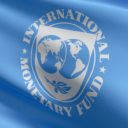
Whether I’m writing about a rich country or a poor country, my research starts with a visit to Economic Freedom of the World. Published by the Fraser Institute in Canada, EFW uses five major factors (fiscal, regulatory, monetary, trade, and quality of governance) to rank nations based on the overall amount of economic liberty.
 The rankings go as far back as 1970, so you can see how a country has changed over time, and the good news is that scores have improved in most nations.
The rankings go as far back as 1970, so you can see how a country has changed over time, and the good news is that scores have improved in most nations.
Today, let’s look at a history of the freest nations. We’ll start with the table from 1970.
Unsurprisingly, Hong Kong was at the very top. But who would have guessed that Luxembourg would be second? Canada ranked #3 and the United States was in 4th place, followed by Japan and four European nations.
Perhaps the most shocking bit of news is that Venezuela was ranked #10.
All the more reason that Venezuela’s last-place status in the most-recent edition is so depressing. That must be a record for the biggest-ever decline for a country.
If we look at the data for 1975, 1980, and 1985. Luxembourg continues to get very high scores, along with Hong Kong and the United States.
Panama and Guatemala ranked amazingly high in 1975, while the United Kingdom finally appears in 1985 (thanks to Margaret Thatcher’s reforms).
Here’s the data for 1990, 1995, and 2000. You’ll notice that New Zealand and Australia enter the top 10 while Luxembourg begins to drop (at least relatively speaking) and Singapore begins to climb.
Now let’s look at what has happened this century.
Hong Kong and Singapore have a lock on the top-two slots, with New Zealand and Switzerland controlling the third and fourth positions. Luxembourg, meanwhile, has vanished.
In 2010 and 2015, we see some nations appear from the developing world and the post-communist world. Most notably, Chile, Estonia, and Georgia.
For a policy wonk, these are fascinating numbers. I enjoy looking how relative rankings have changed, as well as what’s happening to absolute scores.
It’s such good source of data that I’ve always wished there were pre-1970 numbers as well.
Well, my wish has been granted. Ryan Murphy and Robert Lawson, two of the scholars who put together Economic Freedom or the World, have cranked out estimates for the entire post-World War II era.
 Based on their retroactive assessment, they show that the United States had the world’s freest economy back in 1950.
Based on their retroactive assessment, they show that the United States had the world’s freest economy back in 1950.
Switzerland was in second place, followed by a bunch of European and Anglosphere nations.
If you want to understand why Luxembourg, Belgium, Norway, and Sweden are rich today, notice that they have a history of being among the world’s most pro-market nations.
Incidentally, due to inadequate data, Singapore wasn’t included in the retroactive data until 1960 and Hong Kong is complete absent from this historical dataset.
We don’t have top-10 lists for the other years, but the authors shared a table with all their numbers, so I created my own versions for 1955, 1960, and 1965.
As you can see, congratulations to Switzerland and Luxembourg (twice). The United States and Canada get very high marks. And Belgium and the Netherlands get good scores as well.
There are so many implications to this data, but I’ll close with three simple observations.
- First, these numbers help to explain why Europe is a relatively rich continent. European nations traditionally have dominated the top-10 rankings. It’s not a good continent for fiscal policy, but those countries dominate the scores in other policy areas.
- Second, you can fall behind by standing still. If you take a close look at data for Luxembourg, Belgium, and the Netherlands, you’ll notice their absolute scores haven’t really changed. But all of those nations have dropped out of the top 10 because other countries improved.
- Third, global economic liberty is increasing. The top scores in the 1950s and 1960s wouldn’t get a country into the top 10 this century.
P.S. A Spanish academic also has produced some very interesting historical estimates for economic freedom, but his numbers are only averages for western nations.










